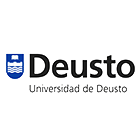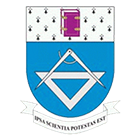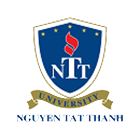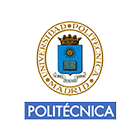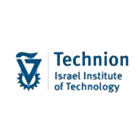Tutorial 1: Energy efficiency in Cognitive Radio Networks: Challenges, Trade-offs, and Solutions
Tutors: Suzan Bayhan, Salim Eryigit, Gürkan Gür



Tutorial Summary: The surge in the number of mobile devices has brought new paradigms into the communications landscape together with new challenges for their efficient operation. First, mobile crowd sensing has become one of the new computing paradigms that exploit the computing power of sheer number of mobile devices for a variety of purposes (e.g., air pollution measurement to locating urban hotspots). Second, mobile video traffic is dominating the Internet traffic with a share of 66 percent in 2013 and an expected share of 79 percent in 2018 (according to Cisco’s 2014 report). Add to this the privacy concerns, fog computing is emerging as a new approach that puts the intelligence as well as control closer to the edge or the end devices. These trends can also be interpreted as a need for smarter end devices as well as an urgent requirement for energy-efficient protocols. Given the spectrum scarcity, energy-efficient cognitive radios (CR) are paramount for meeting all these goals. In this tutorial, we aim to provide the basics of energy efficiency in CR networks (CRNs), including the challenges and the involved trade-offs — QoS, fairness, PU interference, network architecture and security. We discuss that devising energy-efficient solutions may be challenging due to some conflicting goals in CR design (e.g., providing security may require tasks that increase energy consumption). Moreover, we give an overview of the related work from the perspective of these trade-offs. The tutorial captures the current state-of-the-art in the fields of green networks and CR communications as well as challenges, potential solutions and research.
Suzan Bayhan:
([email protected]) received her PhD degree in computer engineering in 2012 from Bogazici University, Istanbul, Turkey. In 2012, she joined Helsinki Institute for Information Technology (HIIT) in Finland. Currently she works at the Department of Computer Science, University of Helsinki, Finland as post-doctoral researcher. Her research interests include wireless networking, cognitive radios, mobile opportunistic networks, and content-centric networking. She received the Google Anita Borg EMEA scholarship in 2009 that is awarded to the outstanding women studying in computer science. 10th International Conference on Cognitive Radio Oriented Wireless Networks April 21–23, 2015 Doha, Qatar
Salim Eryigit
([email protected]) received his B.S. degree in industrial engineering in 2003, and Ph.D. degree in computer engineering in 2014 from Bogazici University, Istanbul, Turkey. He is a senior R&D engineer at Idea Technology, Istanbul. His research interests include cognitive radios, network optimization, green communications and content-centric networking. He is also a member of Satellite Networks Research Laboratory (SATLAB) and Telematic Research Center (TAM) at Bogazici University.
Gürkan Gür
([email protected]) received his B.S. degree in electrical engineering in 2001 and Ph.D. degree in computer engineering in 2013 from Bogazici University, Istanbul, Turkey. Currently, he is a senior R&D engineer at Provus – a MasterCard Company. He is also a member of Satellite Networks Research Laboratory (SATLAB) at Bogazici University. His research interests include cognitive radios, green wireless communications, small-cell networks, network security and information-centric networking. He has two patents and published more than 30 academic works. He is a senior member of IEEE.
Tutorial 2: Multi Objective Optimization Techniques for Designing Next Generation Autonomous Communications Networks
Tutor: Keivan Navaie

Tutorial Summary: Next-generation communication systems are often envisaged as an interconnected set of a variety of autonomous communication entities each with a particular set of quality-of-service requirements competing for acquiring access to limited shared resources. Next-generation heterogeneous networks act as a vital technical enabler for future internet-of-things. Multi-objective Optimization (MO) provides a capable analytical tool for modelling and investigating the behaviours of heterogeneous communication networks and offers critical information for designing efficient interoperations among autonomous entities. This tutorial briefly covers the analytical foundation of convex and non-convex MO including, the concept of optimality and non-dominance, stability and robustness as well interactive and evolutionary techniques for obtaining optimal solutions. A variety of MO applications are then discussed including instructor’s recent research on spectrum sharing, adaptive cognitive beam-forming and intersystem bargaining protocol design for cognitive cellular networks.
Bio: Keivan Navaie (SMIEEE) received his Ph.D. in 2004. From March to November 2004, he was with the School of Mathematics and Statistics, Carleton University, Ottawa, Canada, as a Postdoctoral Research Fellow working on stochastic modelling of wireless networks. From December 2004 to September 2006, he was with the Broadband Communication and Wireless System (BCWS) Centre, Carleton University, Ottawa, Canada where he was the project manager of BCWS participation in European Union 6th Framework integrated project, the Wireless World Initiative New Radio (WINNER) on beyond 3G wireless systems. From September 2006 to July 2011 he was with the Department of Electrical and Computer Engineering, Tarbiat Modares University, Tehran, Iran. From July 2011 to November 2014 he has been with the School of Electrical and Computer Engineering, University of Leeds, Leeds, UK. He is currently a Senior Lecturer in the school of Computing and Communications, University of Lancaster, Lancaster, UK also a visiting research scientist in Telefonica Research and Innovation, Barcelona, Spain. His research interests lie in the field of radio resource allocation for wireless communication systems, dynamic spectrum allocation, cognitive radio networks, cooperative communications and stochastic network modeling. He has published more than 100 papers in peer reviewed journal and conference proceedings. Dr. Navaie is on the editorial board of the European Transactions on Telecommunications. He has also served as (co)Chair of Wireless Network Track, IEEE VTC-2012 Yokohama, Japan and IEEE 8th International Workshop on Wireless Network Measurements WiNMee 2012, Paderborn, Germany, IEEE VTC2014-Spring, Seoul, South Korea, and IEEE WCNC 2014, Istanbul, Turkey. He is the recipient of the 2011 IEEE Iran Section Young Investigator award. His paper, “Access strategies for spectrum sharing in fading environment: Overlay, underlay and mixed,” was in the IEEE Communication Society Best readings on Cognitive Radio 2012. Dr. Navaie is Senior Member of the IEEE, and a Chartered Engineer in the UK.
Tutorial 3: Enabling Green 5G through HetNets and Big Data Empowered SON
Tutors: Ali Imran, Muhammad Zeeshan Shakir, Muhammad Ali Imran



Tutorial Summary: It has become clear that in order to meet the 1000x capacity growth target, the future cellular networks have to radically deviate from their conventional design principles. While the 5G architecture and radio access technology is yet to emerge, network densification, diversity of cell sizes, miscellany of node types, infrastructure sharing and concurrent operation at multiple frequency bands can be envisioned to be the some of the potential ingredients of the overall 5G solution. The use of aforementioned features mean we will have to focus even more on resolving challenges of complexity of operation, interoperability, CAPEX, OPEX and energy consumption. Therefore, to realize the aforementioned 5G vision successfully, the three key research paradigms that have to be exploited at much further breadth and depth are: 1) HetNets, 2) Big data Empowered SON (BSON), and 3) Energy Efficiency (EE).
The objective of this tutorial is to provide the audience with a unified and very timely perspective of how the way towards the next generation of wireless communication networks can be paved from the crossroads of HetNets, BSON and EE. To this end, the tutorial will begin by exploring the latest trends and concepts that are shaping the global 5G landscape, including the activities at 5G research center at University of Surrey, UK. The concept of the HetNets extrapolated to 5G, also called cloud RAN, will be further delved into. The latest findings and results in the context of cloud RAN, from the research work done in the multinational www.QSON.com project funded by QNRF, will be shared in an interactive setup. The discussion will progress with an in-depth analysis of the RRM challenges in HetNets and tested as well as prospective solution approaches therein. This will be followed by an engaging technical discussion on what is BSON, why we need it and how it can be leveraged to address many of the 5G research challenges identified in the prior parts of the tutorial. To provide deeper understanding and trigger further research, latest results from the recent case studies on Big data Empowered SON for dynamic pro-active RRM, self-healing and energy efficiency, generated by QSON project, will be shared. The tutorial will conclude with an interactive discussion on the open research challenges that need to be addressed on our way towards 5G.
Bios:
Ali Imran has been an assistant professor in telecommunications at the University of Oklahoma-Tulsa since January 2014. From October 2011 to January 2014, he worked as a research scientist at QMIC, Qatar (www.qmic.com). In that position, he conducted research on a wide range of innovative solutions by drawing mainly on discipline of wireless cellular communications in general and cellular communications in particular. Currently he is leading a multinational $1.045 million research project on self-organizing wireless networks, QSON (www.qson.org) funded by the Qatar National Research Fund (QNRF). From October 2007, he was a research fellow in wireless systems at Centre for Communication Systems Research at the University of Surrey, UK. In that position Imran contributed to a number of pan-European and international research projects while working in close collaboration with key industrial players such as NEC Europe Ltd. (UK), Telefónica (Spain), DOCOMO (Germany), Polska Telefonia Cyfrowa (Poland), Qualcomm (Germany), TTI (Spain), mimoOn (Germany), CTTC (Spain) and CEA– LETI (France). From March 2004 to October 2007 he worked as a communication lab instructor, BS deployment team leader and RF consultant to a leading telecom company in Pakistan. During his pedagogical journey, Imran has won several highly competitive awards and research scholarships with collective worth of $150,000. Imran’s research interests include self-organizing networks, radio resource management, and big data and its applications in cellular networks. He has been author on more than 35 peer-reviewed journal and conference papers, two book chapters and a patent. He has been lead tutor for a number of tutorials presented at international forums, including IEEE ICC, 2013 Budapest, IEEE WCNC 2014, Istanbul, and European Wireless 2014, Barcelona. Imran is an associate fellow of the Higher Education Academy, UK, and a member of the advisory board to Special Technical Community on Big Data of the IEEE Computer Society.
Muhammad Zeeshan Shakir has been an assistant research scientist with the Wireless Research Lab at Texas A&M University at Qatar since July 2012. Previously, from November 2009 to June 2012, he was a research fellow with the Communication Theory Lab at King Abdullah University of Science and Technology (KAUST), Saudi Arabia. In 2010, he received a Collaborative Research Fund grant from the Global Collaborative Research Initiative to start bilateral collaboration with foreign universities. From September to December 2010, he was a visiting researcher with the CCSR at the University of Surrey, UK. In 2010, he earned his Ph.D. degree in Electrical and Electronic Engineering from University of Strathclyde, UK. From 2006 to 2009, he was the joint recipient of an industrial research fund and a prestigious overseas research scholarship by the University of Strathclyde and Picsel Technologies Ltd. UK. Shakir's research interests include performance analysis of wireless communication systems, including hyper-dense heterogeneous small-cell networks with particular focus on Green communications and backhauling technologies. He is also interested in deriving emerging wireless application oriented unified frameworks for machine type communications, cognitive radio communications and ubiquitous remote/mobile healthcare communications. He has published more than 70 technical journal and conference papers and has contributed to six books, all in well-reputed venues. Most of his research has been sponsored by Qatar National Research Fund (QNRF) and national industrial partners. Shakir has given tutorials on emerging wireless systems and has been a member of the technical program committee for several IEEE flagship conferences. He is the founder of IEEE Workshop BackNets 2015. He is the technical chair of Crowncom 2015 and several special sessions/workshops. He is serving as a lead guest editor for IEEE Comm Mag and IEEE Wireless Comm Mag. Currently, he has been serving as Secretary to the IEEE DySPAN 1900.7. He is an active member of IEEE and IEEE Standard Association.
Muhammad Ali Imran is currently a reader (associate professor) in the Institute for Communication Systems (ICS, formerly known as CCSR) at the University of Surrey, UK. He is leading a number of multimillion-dollar international research projects encompassing the areas of energy efficiency, fundamental performance limits, sensor networks and self-organizing cellular networks. He is also leading the new physical layer work area for 5G innovation center at Surrey. He has a global collaborative research network spanning both academia and key industrial players in the field of wireless communications. He has supervised 20 successful Ph.D. graduates and published more than 150 peer-reviewed research papers, including more than 20 IEEE Transaction papers. He has been awarded IEEE Comsoc’s Fred Ellersick award 2014 and FEPS Learning and Teaching award 2014, and twice nominated for Tony Jean’s Inspirational Teaching Award. He is a shortlisted finalist for The Wharton-QS Stars Awards 2014 for innovative teaching and VC’s learning and teaching award in University of Surrey. He is a senior member of IEEE and a senior fellow of the Higher Education Academy (SFHEA), UK. He has given more than five plenary talks in international conferences, including World Wide Radio Forum WWRF (2010), IEEE CAMAD (2012), and IEEE VTS/EPSRC Commnet 2012. He has also delivered more than 20 invited seminars in international educational institutions and research centers of leading communication industry. He has presented tutorials on self-organiszng networks and energy efficiency in several international conferences: ICFCN Iraq, 2012; ICCSPA UAE, 2013; ICSICCST Pakistan, 2013; IEEE PIMRC UK, 2013; IEEE WCNC Turkey, 2014; IEEE ICC Australia, 2014; European Wireless Spain, 2014. He has chaired several tracks/workshops of international conferences: IWCMC, Global SIP, Crowncom, European Wireless, Stem 5G, ICC, VTC. He is guest editor for IEEE Communications, IEEE Wireless Communication and IEEE Access. He is an associate editor for IEEE Communications Letters and IET Communications magazine.





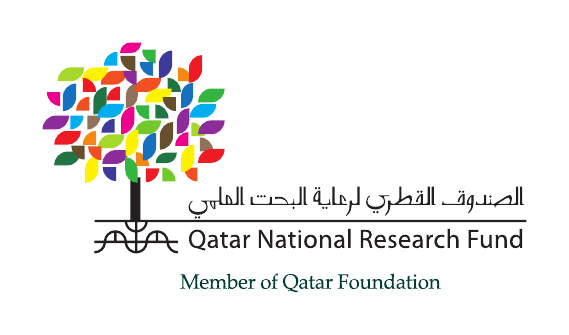


.jpg)




